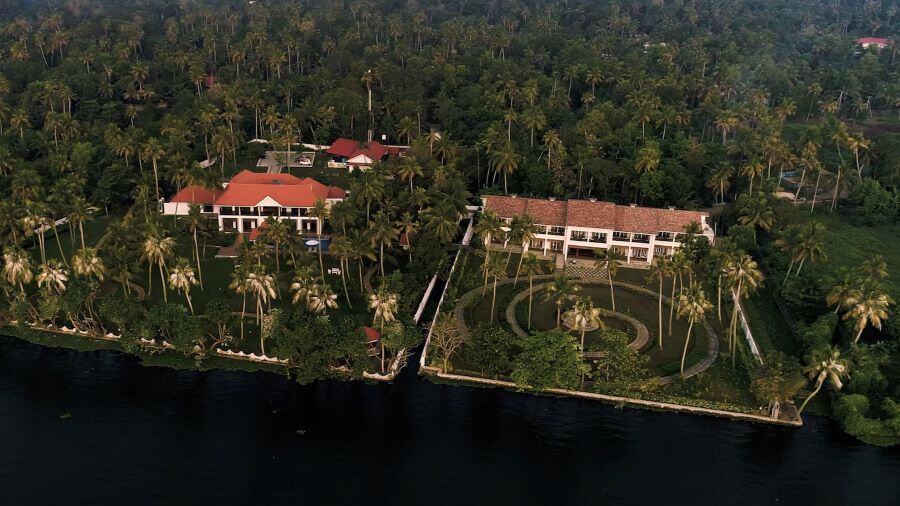Walks in the rain, gushing waterfalls and lush greenery enveloped by mist — is this what you imagine when you think of your dream monsoon getaway? Well, thank your stars, as there might just be the perfect holiday destination for you. Nestled in the Sahyadri Hills (the Western Ghats) of Maharashtra, Amboli is a popular hill station perfect for tourists who wish to soak up the irresistible charm of nature during the wet months. It is also one of India’s biodiversity hotspots.
Located on the Vengurla-Belgaum state highway in the Sindhudurg district, Amboli is an overnight journey away from Mumbai and Pune. Visitors get off at Sawantwadi Road (Sawantwadi Road railway station if travelling by train) and from thereon, awaits an unforgettable road journey.
As one drives from Sawantwadi to Amboli, especially during the monsoon season, one can spot cascading waterfalls, and the scenic green landscape seems never-ending. Soon the Parpoli Ghat, with couloirs on one side and a wall of mountains on the other, begins. The Ghat ends at a checkpost, and from this point onward, lies the region of Amboli.

A drive through the lush greenery of Parpoli Ghat is a feast for the eyes
Both Amboli and the get-off point Sawantwadi have been historically significant locations. Almost 300 years old, Sawantwadi was ruled by the Sawant Bhonsle dynasty and was one of the non-salute Maratha princely states during the British Raj. The Bhonsles of Sawantwadi had built a huge summer palace at Amboli, the ruins of which stand to this day.
Later — in 1880 — a British national, Colonel Westrop, developed Amboli into a hill station. The British found it a strategic point from which soldiers could be sent to central and south India. This monsoon getaway thus also doubles up as an ideal destination for history lovers.
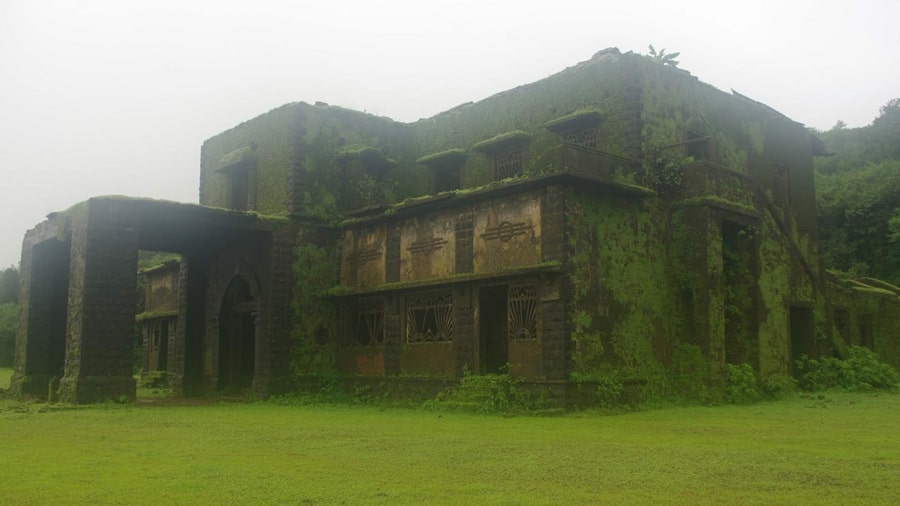
The ruins of the summer palace of the Sawantwadi Bhonsles in Amboli
An itinerary for your Amboli visit
Day 1
Once you reach your hotel and are all settled in, it’s time to get geared up for the day. Put on a waterproof poncho and start the journey — preferably a walk in the drizzle — towards Mahadevgad Point. Dotted with age-old trees on both sides, the road to this location is nothing short of magical.
What lies at the end of this road is just as breathtaking — a spectacular view of verdant rolling hills and clouds that seem within reach. Mahadevgad once had a fort of which nothing remains today. Nor do any clues of a battle that supposedly took place here. The unmatched natural beauty of the spot, however, is a reason enough to visit.

Rolling hills, green valleys and floating clouds, as seen from the Mahadevgad Point
Coming back to the main road, a walk southwards takes one to the magnificent Amboli Dhabdhaba or Amboli waterfall. Most visitors choose this spot to take a breather and snack on refreshments from a local joint.
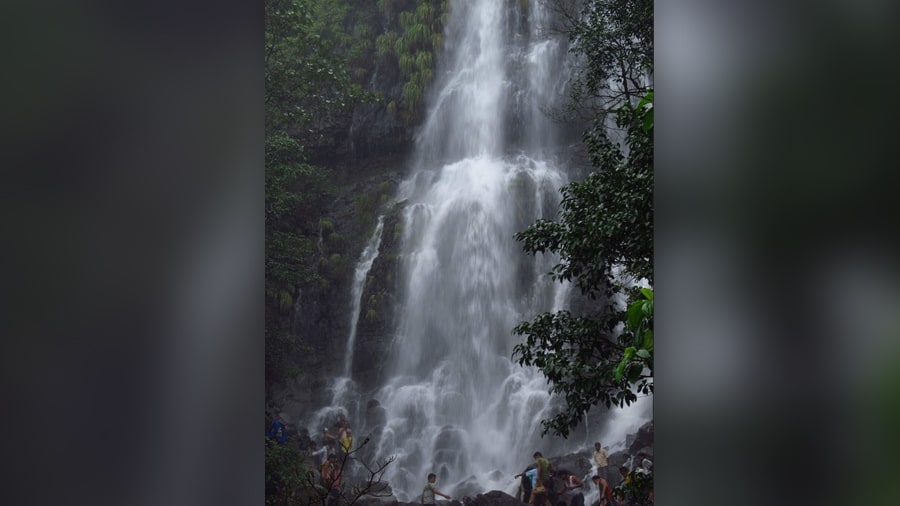
The lofty Amboli waterfall is one of the main tourist attractions of Amboli
The waterfall also happens to be just a kilometre away from the ruins of the summer palace of the Bhonsles, the interiors of which you can still check out. A forest park near the Amboli waterfall can be the next and last location for the day. Here is where you can get a glimpse of native fauna like the Malabar gliding frog, Malabar bush frog, Malabar pit viper and the green vine snake. Once you have toured the forest park, return to your hotel, have an early dinner and get some rest. A delightful day-2 is just around the corner!

An Amboli bush frog and a green vine snake Dr. Raju Kasambe, Wikimedia Commons
Day 2
Arrange for an autorickshaw beforehand for your second day in Amboli, as you will be stepping out quite early in the morning. The first spot of the day will be the Hiranyakeshi Temple, which stands adjacent to the cave from which the river Hiranyakeshi originates. The temple premises houses a small idol of Devi Hiranyakeshi, an avatar of goddess Parvati.
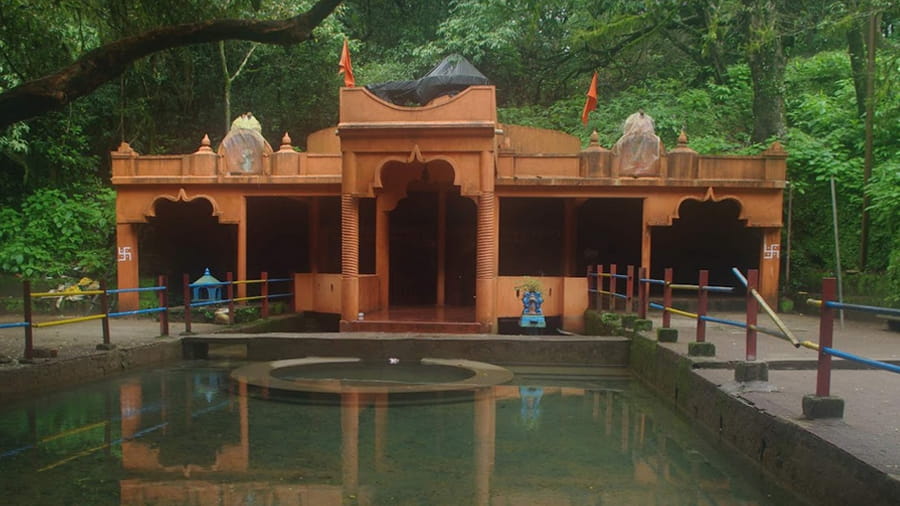
The Hiranyakeshi temple premises
Next on the list are the Ragheshwar Ashram and Swayambhu Ganesha temple. Here too, the Hiranyakeshi river flows by, and it is said that the true beauty of the sprightly waters of the river can be best appreciated from this location.
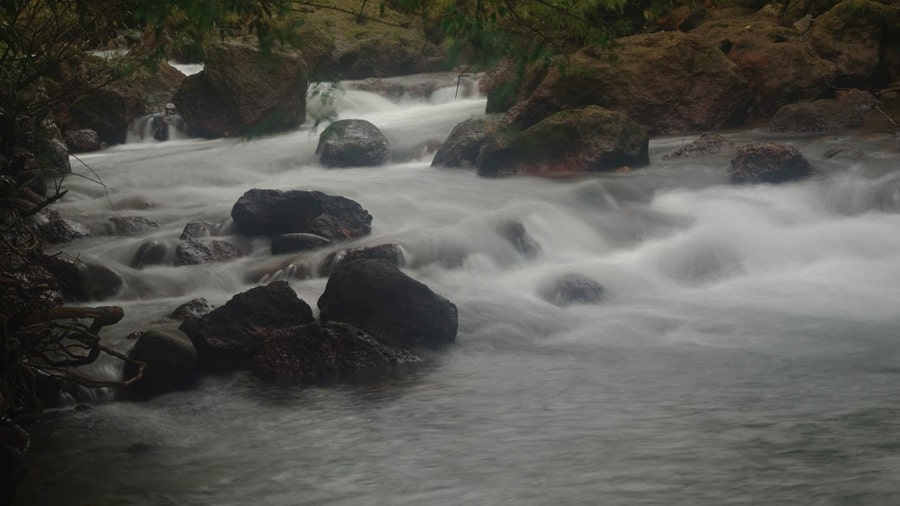
Hiranyakeshi river in full flow during monsoon
After the Ragheshwar Ashram, you can head towards the Nangartas waterfall, known for its cascading waters that plunge into a huge drop below. With a visit to the Nangartas, you will have covered almost all the major tourist spots at Amboli. The picturesque Kavalesaad Point near the waterfall can be the last location you visit. And that essentially concludes your two-day stay at Amboli.
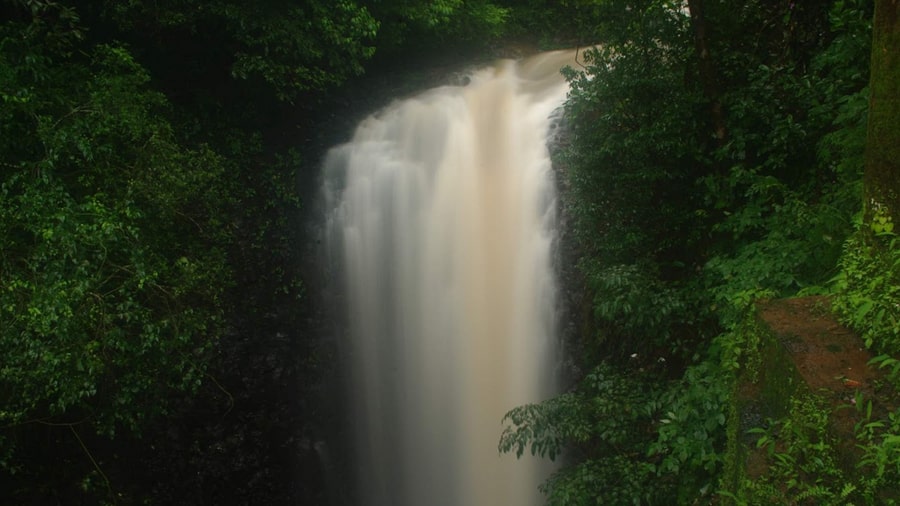
The stunning Nangartas waterfall plunges into a huge drop below
A couple of days is enough to hit up all the hill-station hubs and take home unforgettable memories of this monsoon sojourn. Once you are ready to leave Amboli, you can drive back to Sawantwadi Road. From here, you can head to other popular destinations like Ratnagiri or Ganapatiphule.
Travel details
- If you are travelling to Amboli from Mumbai, take the Konkan Kanya Express from the CSMT terminus. You will reach Sawantwadi Road railway station at around 9 a.m.
- If you plan to visit Amboli from Pune, a Volvo bus journey to Sawantwadi Road is your best option, since train service from Pune to Sawantwadi Road is infrequent.
- From Sawantwadi Road, a 30-km ride in a rented car or an autorickshaw will take you to Amboli.
Travel Tips
Amboli is a biodiversity hotspot and home to many types of fungi and yeast. Make sure to carry enough underclothing and some anti-fungal powder. Get yourself dry as soon as you reach your hotel. You may also consider avoiding fish during your stay as they might not always be fresh.


